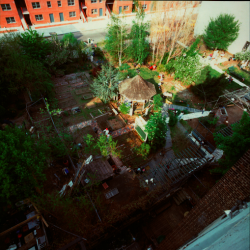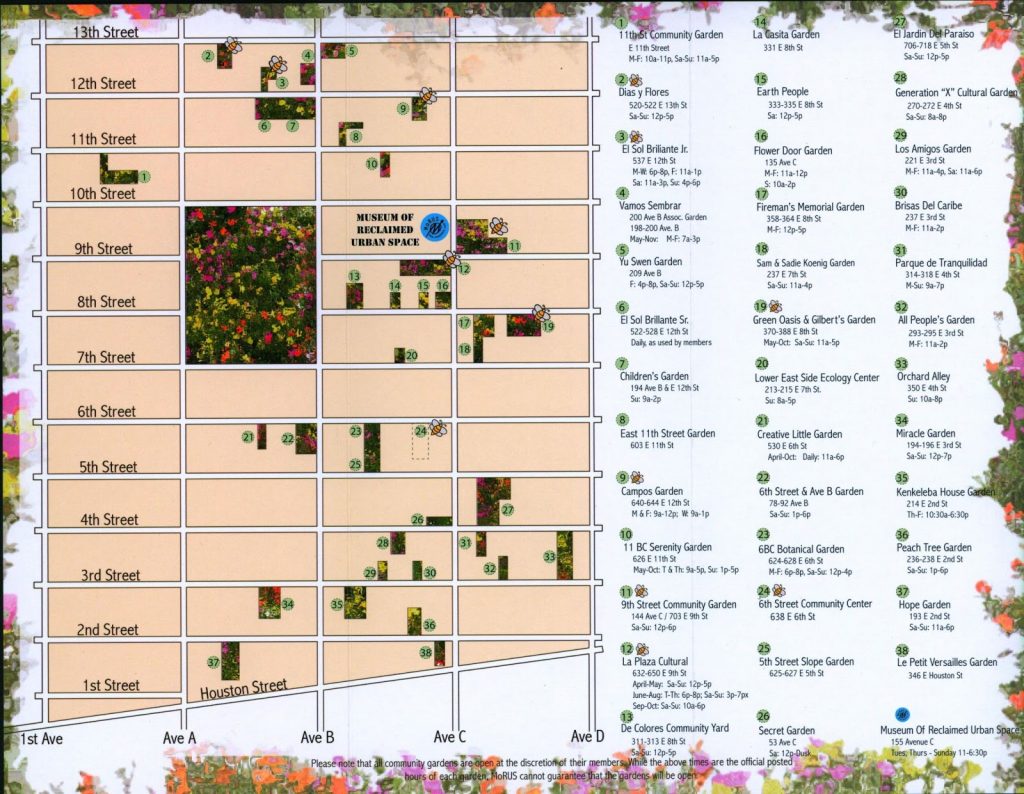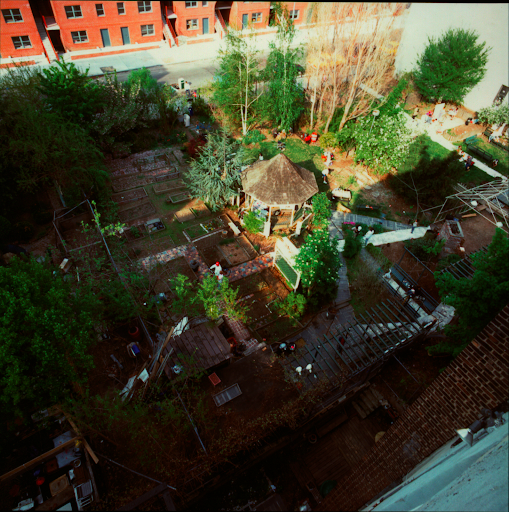July — Radical Community Part 3 of 4: Solutions to the Lack of Open Space and Food Inequity

by John C. Harris
July 13 2021
Food, and access to food, is a global problem. It is no different in the Lower East Side.
That issue has been magnified by the lack of “open space.” As buildings crumbled in the 1970s space was opened up but what to do with those ruble strewn lots remained in question. Crime and drugs found their way in eventually, but the community members knew there were better alternatives for these newfound spaces. In many cases the answer to these issues were community gardens. At their height in the 1980s there were nearly one hundred community gardens in Manhattan. Today, the East Village Community Garden Map produced by MoRUS locates thirty-eight community gardens in the neighborhood alone.

(East Village Community Garden Map, Museum of Reclaimed Urban Space)
Two historic gardens within that network are Green Oasis Community Garden, on 8th Street between Avenue’s C and D, and La Plaza Cultural, on the corner of 9th Street and Avenue C. La Plaza was created in 1976 by members of the Lower East Side’s predominantly Puerto Rican community as a creative space to protect the youth and allow for creative expression. It is an event-based garden, practicing and teaching sustainable techniques such as water recovery, solar energy, composting, and other skill share workshops. Green Oasis was conceived in a similar vein. According to a 1980s mission statement from the Green Oasis Community Garden Records in our archive, the garden was officially started in 1981 “to create an alternative to the streets for the neighborhood youth” and went on to become a positive force within the neighborhood providing garden beds, theater workshops, and lectures on contemporary social issues. Among their most recent efforts was the Lil Drag Show as part of the Pride celebrations this month.

(Photo overlooking the Green Oasis from the Green Oasis Community Garden Records in MoRUS Archives)
Community Gardens are great arenas to learn skills, build confidence, and model sustainable agriculture on a small scale. But it is a long-term solution to the issue of food scarcity. That problem that grew exponentially during the Covid-19 pandemic which is waning at the time of this blog post. More immediately solving the issue of food availability is the ever-growing number of community fridges. Including the recent Loisaida Fridge (@loisaidafridge) built by the 11th Street Workshop outside of Trinity Lower East Side, East Village Community Fridge (@eastvillageneighbors), and 466 Grand Street Community Fridge (@les_community fridge) which operates with an ethos listed on their Instagram of “Take what you need, leave what you don’t, give what you can.” The community maintains these spaces and the community is better for their presence. And while not every city has the space for community gardens it is more likely they can replicate this model of community fridges and fulfill their own community needs.
The Lower East Side and East Village continue to be a model of radical problem solving. In the next post we will conclude the series highlighting the neighborhood’s radical network of spaces and explore the grassroots solutions to media and cultural production!
